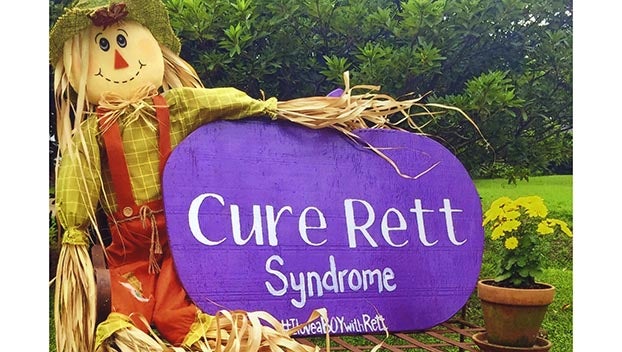Remembering Logan: Family honors son, raises awareness of rare genetic disease
Published 12:16 am Saturday, October 26, 2019
At the beginning of October, most families in Anna Byrne Jones’ neighborhood in Natchez started to decorate around their homes with fall colors — particularly bright orange pumpkins.
Jones said she and her son Michael’s family in Baton Rouge did the same, only they very pointedly painted large pumpkin-shaped signs bright purple with heavy hearts and wrote the words “Cure Rett Syndrome” in giant letters with hopes that maybe one person might stop and ask what the sign meant.
Jones said her grandson, Logan, would have turned 4-years-old Oct. 6, the same day Louisiana State University’s stadium lit up with purple lights in Logan’s memory and to spread awareness for all children who’ve suffered from Rett syndrome — a neurological disorder that attacks the MECP2 gene located on the X chromosome.
Michael and Samantha Byrne of Baton Rouge lost their son Logan to the rare genetic mutation in June and Oct. 6 was the first Birthday they’ve missed Logan, Samantha Byrne said.
“It was pretty amazing to see the stadium lit up with purple lights,” Byrne said. “I honestly didn’t think it would happen. It was beautiful, seeing that and knowing that it was for Logan.”
Byrne said Logan started having complications immediately after he was born and had a tracheotomy three months after his birth.
The Byrne family spent weeks at the Texas Children’s Hospital in Houston while their newborn had numerous tests and procedures. Meanwhile, the Byrnes tried to keep normalcy in their older son, Trey’s life, Jone’s said.
It is commonly believed that Rett syndrome is more common in females, Byrne said.
Most girls show symptoms in early toddlerhood including lack of speech, limited mobility, breathing problems and seizures as well as gastrointestinal and orthopedic issues.
In the 60 known cases found in boys worldwide, the syndrome has always been fatal, Jones said.
“It’s so rare for boys,” Jones said. “They had a full genetic test done on the three of them — Michael, Sam and Logan. That’s when the figured out it was Rett. It was a while after he was born — six to eight months. … The doctors told them his life expectancy was four years, and he made it to three and a half. It was a progression of all the symptoms that go with it, the seizures and everything. It all just got worse and worse like they said it would.”
Byrne said she believes more boys may have had Rett syndrome without their families ever knowing it.
“We couldn’t find a whole lot of literature on boys once we found out what it was,” Byrne said. “We didn’t have any information or any support at first. … I honestly think that if we hadn’t had a test done, we never would have had a diagnosis.”
Feeling helpless, Jones said she reached out to Tim Freeman of Rett Syndrome Research Trust — a world-leading organization for Rett syndrome research — to find out if there was anything she could do to help other children like Logan.
“The main thing we want to do is make people aware,” she said. “No one knows what Rett is. I didn’t until it happened.”
Each October, Byrne said she puts a purple sign outside with a hashtag #ILoveaBoyWithRett at the bottom.
“I think researchers are extremely close to a cure,” she said. “… We’ll continue to advocate and spread awareness for Rett syndrome, because we don’t want any other parent to go through what we have.”
To spread awareness, Jones said others could paint a pumpkin purple — which symbolically represents Rett syndrome — and may also send donations to www.ReverseRett.org/Donate to support Rett syndrome research.
“There are several things October is awareness month for besides breast cancer, and I don’t want to take away from anything else. We just want people to know what this is and maybe that can help someone who has a child with these symptoms.”







